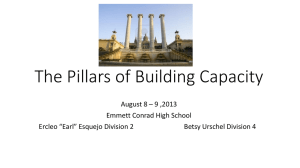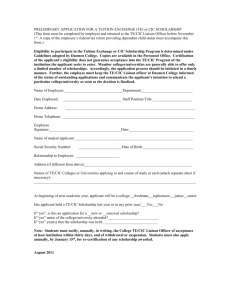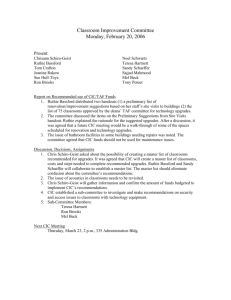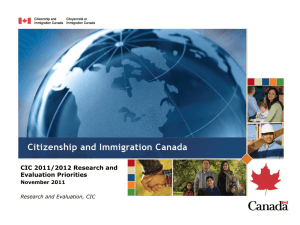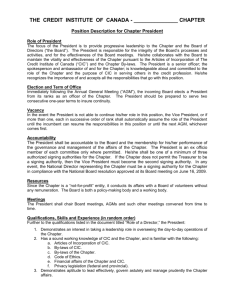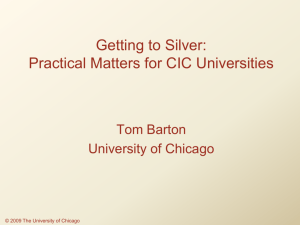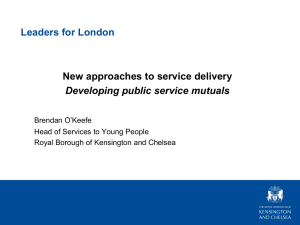Proposed Program Model Feedback
advertisement
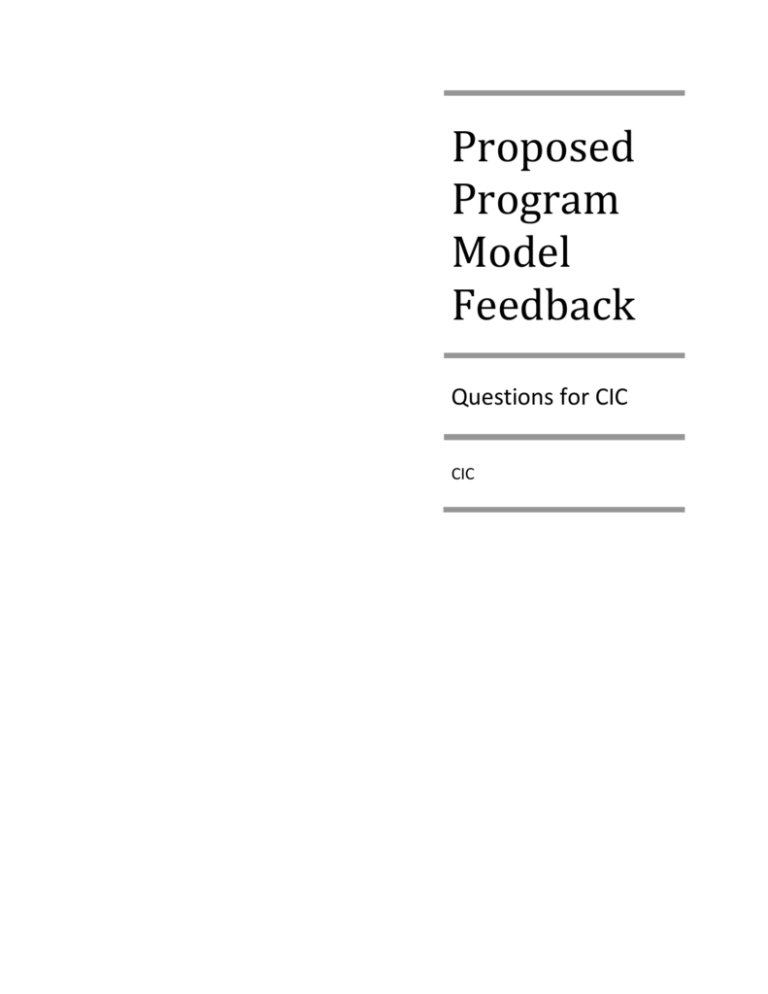
Proposed Program Model Feedback Questions for CIC CIC Contents Resource/Workload Implications ................................................................................................................. 2 Assessment ................................................................................................................................................... 3 Data Gathered............................................................................................................................................... 3 Implementation ............................................................................................................................................ 3 Content ......................................................................................................................................................... 4 Other ............................................................................................................................................................. 5 CIC Processes ................................................................................................................................................ 6 Resource/Workload Implications How will coordination occur across multiple sections of the same course? This is already a problem that has not been addressed. FEC – with the proposed program it appears that current inequities in teaching loads are likely to be worse (i.e. a 12 credit teaching load would result in one person teaching 6 or more courses and others teaching far less) – how will these discrepancies be addressed? Workload issues What buyouts will be available to staff to re-develop courses? How will we get people working together on courses? Will the new program lead to a two-tier model in the faculty? Teachers and Researchers PD for – Sessionals Faculty consultants Faculty Articulation between the micro and the macro ” technical and conceptional ” conceptional and the Philosophical In the past there was (more-near) full autonomy of instructors E.g. Research autonomy begets curriculum autonomy E.g. Add more and more courses and delete more Now there is no autonomy Not true, just less autonomy But should a department that has curriculum expertise not have a curriculum? Regarding sustained time for research, consider different structures for regular term(s) “off” for faculty * i.e. not sabbaticals that need to be applied for, but research terms built into the workload. In years when tenure track faculty are on leave (admin, sabbatical, etc.) what will be the impact to the proposed program in these cases, especially in areas where there are only 1 or maybe 2 people in subject areas. Although 120 student credit hours are still proposed, have we considered what the faculty workload looks like if those 120 hours are 1 credit/coordinated/cross departmental, etc.? How will the financial situation affect the resources needed to implement the changes? Assessment How will assessment within each type of course be handled? i.e. 1 credit, 2 credit this is important for developing competency. Data Gathered Curious about whether any other large programs used a similar model – with a mix of small credit courses. What data do you have on the numbers of students who are clamoring for a 5th year in order to specialize? Or teachers who are pushing to come back for another year? Implementation Where is the implementation plan? This was a good model of what things could look like – what is missing is how it would work? Is there time allotted for shared course development? Incremental implementation – education seminar holds possibility for continuing with this. I think there needs to be more consultation with the departments before a final decision is made on the structure of the new program. Does the ATA/Alberta Ed. Support this type of program design? We wonder how CIC was planning for the transition to ensure use of faculty experience and continuation of initiatives that are already quite successful in many parts of the program. [Elementary Ad Hoc Committee] In light of this lack of detail, it is unclear how our Department will contribute to the new program. Content I think you need to consider carefully how issues like social justice, special needs and aboriginal/ESL considerations are delivered within subject areas – I have a feeling that there may be a lack of awareness about how these issues are taken up across the teacher education program. In grades 36, math has 15% of curriculum time and science has 15%. How is this weighting recognized in this proposed model? Students will quickly grow frustrated with the Ed seminars – how can we better use these credits? Where is the IB equivalent of a “theory of knowledge” course? Involve more undergraduate students in the process of research Should we care that our future teachers are able to make cross-curricular links? If yes, where does this happen now/in the future? While special considerations (eg. Indig, tech, lang & lit) are apparently “covered” in multiple courses now, how will each of our faculty be able to address each of these components well (i.e. with scholarly understanding). Professional Development across multiple areas?? How can the education seminar help promote inquiry and autonomy in the program? % of EDEL curriculum (16 credits – 25% health and PE; 2 credits – LA) Who teaches literacy and numeracy Who teaches integration Will we be able to do justice to Ed Seminar (1 credit ed sem? – 40 students) With fewer 400 level courses, what about smaller class sizes for lecture courses? How will the non-3 or 6 credit course fit into the larger university structure? Where will finals go on the timetable? We wonder why CIC made no mention Open cohorts in the Elementary program, which is something we have requested throughout this process. Learning is all about relationships. Identity develops through belonging to a community. The only Elementary students who are now experiencing this are the ones with strong Minors, yet the Minors would be taken away completely if the proposed model is accepted. What provision is being made to support a sense of community and belonging for the Elementary preservice teachers? Other How to promote (integrate) specialization diplomas as part of this new program. What is the overarching question? Where does this fit in larger scheme? With, for example: global, historical, indigenous, society? How does this engage in larger picture? How does this plan help question theme? How does this program engage students in lifeworld inquiry vs. just “filling them with knowledge”? If education is the knowledge game, where do teachers learn the (ontological, epistemological) rules? “Courageous” graduates Disconnected Faculty (solution: teach all levels) “glue” Students (solution: cohorts) Courses solution: ed. Seminar connected solution: a program of cohort curricula, as proposed How can we re-imagine Workload? Our unique character? In instruction. Our use of senior students? Is there a place for mentoring amongst students within curricular areas who are at differing stages of their program? Have we given up strengths of our current program in trying to remedy the weaknesses? Why would students choose our program over other options? What sets U of A apart? Do we have any evidence that this type of design is good? CIC Processes Why did you delay collaboration with members of the collaborative program? I would like to know what the timelines and feedback process will be (including when a vote will occur). Why hasn’t the process followed original timelines? Why the lack of transparency? (Which leads to distrust in the process.) Who will run the seminar and ensure it becomes an effective structure (especially considering it will be taking time away from curriculum subject areas). If there is a CIC, where is the CD(development)C and CE(evaluation)C? Has the committee consulted with students about their view of strengths and weaknesses of the current program? Will there be an opportunity for students to provide feedback on the proposed program. How will external stakeholders be consulted about the proposed program?
